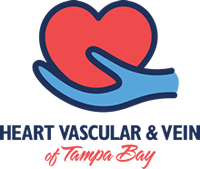Living With an Endovascular Stent Graft
Life after a stent procedure
OVERVIEW
Most people with a endovascular stent graft can’t even tell it’s there. Since abdominal aortic aneurysm is often a risk indicator for clogged arteries and heart disease, many people take this opportunity to shift toward a healthier lifestyle.
AFTER SURGERY
Right after surgery, you will need to rest and take care of yourself. You also should be aware of possible complications and the need for follow-up visits and self-monitoring.
Learn more about what to expect post surgery.
DAILY LIVING
After the initial healing period, you should be able to return to your normal routine, including activities that were part of your daily life before the surgery. Your stent graft should go unnoticed, but there are some changes in your diet and exercise routine that you can make to reduce your risk of heart disease. Although you can expect to live a normal life after endovascular stent grafting. That doesn’t necessarily mean you should return to old habits.
As a person with an abdominal aortic aneurysm, you may have an increased risk for clogged arteries and heart disease. So, take care of yourself and do everything you can to adopt a healthy lifestyle.
STOP SMOKING
Smoking damages the arteries, contributes to clogged arteries and high blood pressure, and may encourage the growth of aneurysms. If you smoke stop and, even if you don’t smoke, stay away from second-hand smoke.
EAT A HEALTHY DIET
Eat a diet low in saturated fats and cholesterol. High levels of fats and cholesterol increase the chance of heart disease due to clogged arteries.
GET DAILY EXERCISE
Take a walk, swim, ride a bike, but don’t lift weights. Regular exercise helps control blood pressure and cholesterol levels. Start off slowly, and check your plans with your doctor to make sure what amount of exercise is right for you at this time. Don’t lift weights or other heavy objects without your doctor’s approval.
LONG-TERM RISKS
The long-term risks of the stent graft implant are not yet known, so you will have to be monitored at least once a year, for the duration of your life, with imaging devices such as computed tomography (also known as a CAT scan or CT). You may need to have more frequent exams and images taken if your doctor feels that there is a problem with the implant.
Information on this site should not be used as a substitute for talking with your doctor. Always talk with your doctor about diagnosis and treatment information.
